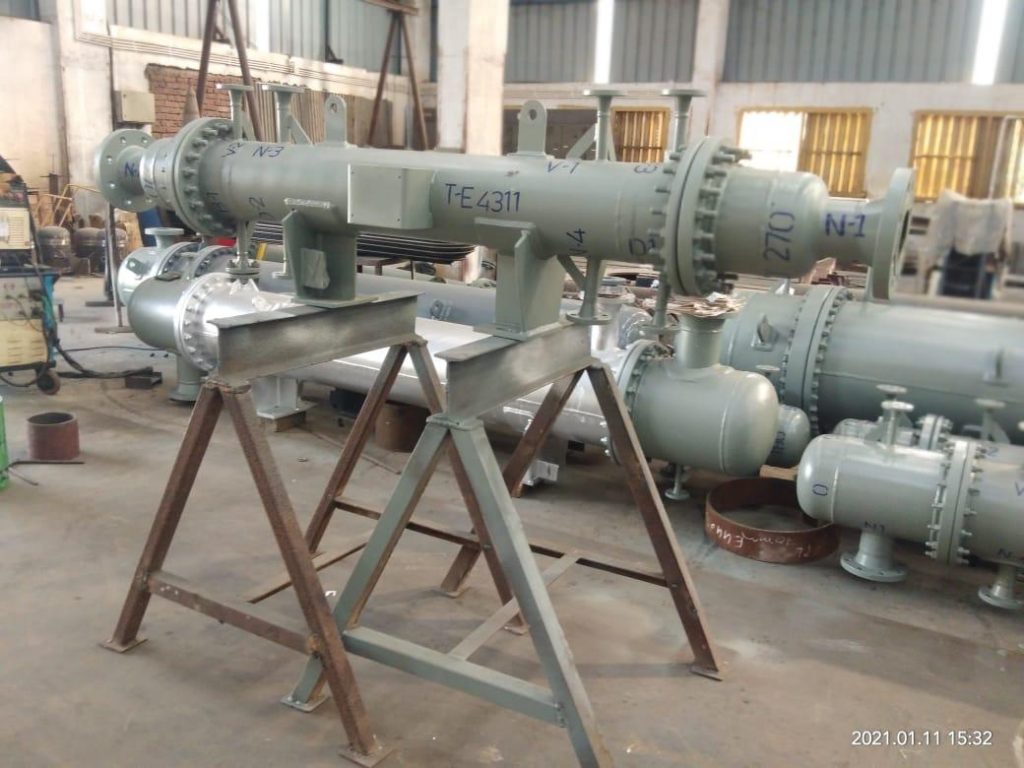Maintenance Practices for Air-Cooled Heat Exchangers (ACHEs) Proper maintenance is critical for ensuring optimal performance, energy efficiency, and longevity of air-cooled heat exchangers. Here are comprehensive maintenance practices:
1. Routine Inspection Practices A. Visual Inspections (Monthly/Quarterly)
Check for fin damage (bent, corroded, or missing fins)
Inspect fan blades for cracks, imbalance, or erosion
Examine tube bundles for leaks or corrosion
Verify structural integrity (supports, vibration dampeners)
Check louver operation (if equipped)
B. Thermal Imaging (Annual)
Identify hot spots indicating fouling or flow restrictions
Detect tube blockages or maldistribution
2. Cleaning Procedures A. Dry Cleaning Methods
Compressed Air (100-150 psi)
Effective for loose debris
Use nozzle at 45° angle to avoid fin damage
Vacuum Cleaning For light dust accumulation
Special fin vacuum attachments available
B. Wet Cleaning Methods
Low-Pressure Water (<600 psi) Effective for moderate fouling
Always spray parallel to fins (never perpendicular)
Foam Cleaning For oily/sticky deposits
Biodegradable foaming agents recommended
C. Chemical Cleaning
For severe scaling or corrosion products
Acid cleaning (10% phosphoric acid solution)Always perform post-cleaning neutralization
3. Mechanical Component Maintenance A. Fan Maintenance Component Maintenance Action Frequency Blades Balance check Annual Bearings Lubrication Quarterly Belts Tension adjustment Monthly Motors Insulation resistance test Annual
B. Drive Systems
VFDs : Check heat sinks and capacitorsGearboxes : Oil analysis and level checks
4. Winterization (Cold Climate Specials) A. Freeze Protection
Maintain minimum airflow (1.5 m/s) during operation
Install tracer heating on critical pipes
Use glycol solutions when applicable
B. Snow/Ice Management
Install anti-icing controls
Manual snow removal from fan inlets
Consider heated louvers
5. Performance Monitoring A. Key Performance Indicators
Air ΔT (Should match design values)Approach temperature (T_out,air – T_ambient)Fan power consumption Pressure drop (airside and process side)
B. Benchmarking
Compare current performance vs as-new condition
Track fouling factor over time
6. Common Problems & Solutions Problem Root Cause Solution High approach temp Fouled fins Clean bundles Vibration Unbalanced fan Dynamic balancing Oil leaks Gasket failure Replace seals Corrosion Moisture ingress Apply coatings
7. Maintenance Scheduling Activity Frequency Tools Required Visual inspection Monthly Flashlight, camera Fin cleaning 6-12 months Air/water spray Bearing lubrication Quarterly Grease gun Comprehensive check Annual Thermal camera, vibrometer
8. Safety Considerations A. Lockout/Tagout
Always isolate electrical power before servicing
Secure fan rotation during maintenance
B. PPE Requirements
Face shield during high-pressure cleaningHearing protection near operating fansFall arrest systems for elevated units
Conclusion Effective ACHE maintenance requires:
Regular inspections to catch issues earlyProper cleaning techniques matched to fouling typeProactive component care (especially fans)Performance tracking to identify degradation
